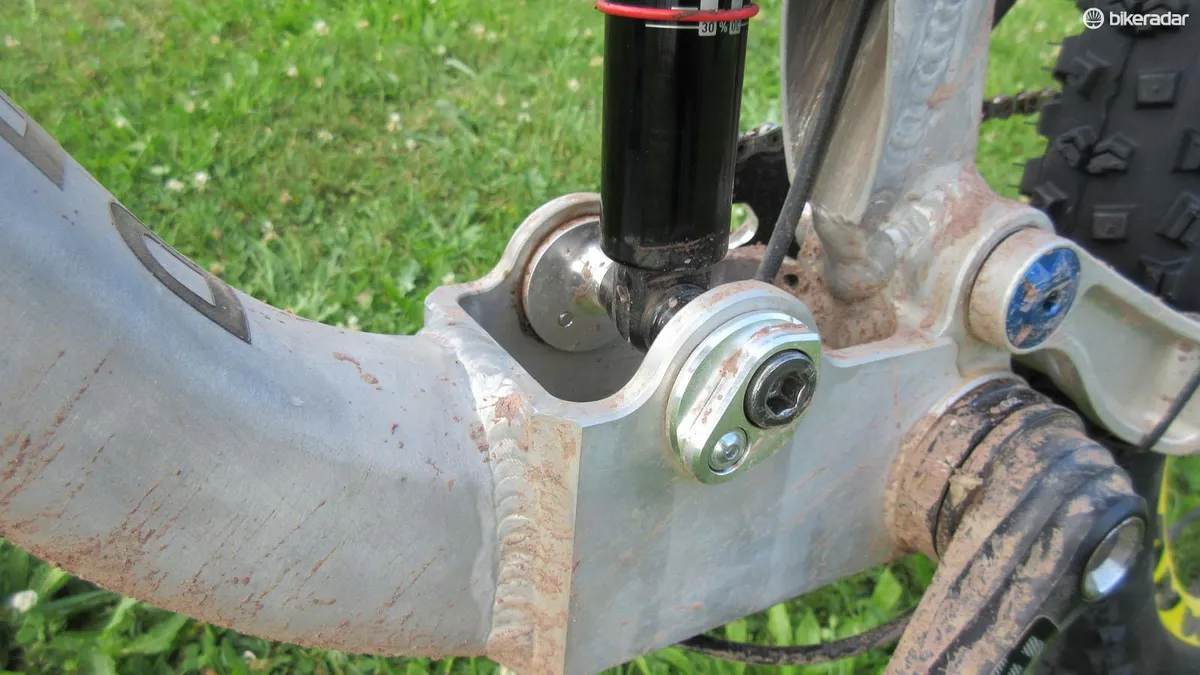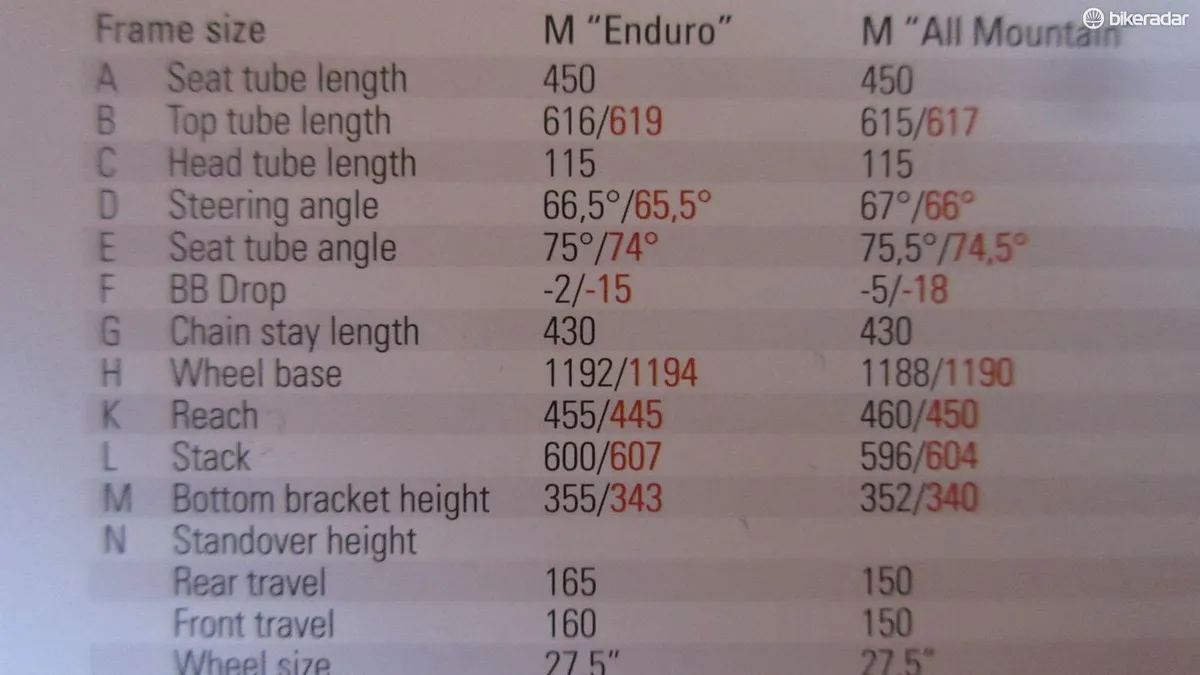The Pikes Peak is the latest gravity-focused trail bike from German direct-buy giant Rose. It will be available with either 150mm travel at each end for all-mountain riding, or 160mm up front and 165mm in the rear for a more enduro-ready ride.
With long, slack geometry and carbon construction, Rose has striven to create a potential enduro race winner, while also allowing the amateur rider to enjoy a capable trail bike.
The Pikes Peak uses an innovative mechanism for adjusting both the bike’s geometry and suspension kinematics, known as Progeo. The Progeo system alters the position of the lower end of the shock, allowing the rider to choose between two different geometry configurations: lower and slacker, or taller and steeper.
In the first option, the BB height is fairly low at 343mm, but can be raised to 355mm, while the seat angle (all-important for climbing) goes from 74 to 75 degrees. Now, this is nothing new – Canyon’s ‘Shapeshifter’ technology, as used on the carbon Strive enduro bike, affords similar geometry tweaks to be made on the fly – but Rose’s system also allows the progressivity (how willing the bike is to use full travel) to be altered independently.

At the Pikes Peak's its heart is Progeo, a system for adjusting both progressivity and geometry
Bottoming out too frequently? Switch to the more progressive setting. Not getting full travel? Use the less progressive mode. This is achieved via an eccentric lower shock mount, contained within a square-taper shaft which clamps into the frame, which offers four positions to choose from – corresponding to all four combinations of geometry and progressivity. To change between modes requires an 8mm Allen key and took us about 30 seconds.
Talking of geometry, we’re glad to see the Pikes Peak is designed around short 35mm stems for improved handling. The Medium boasts a fairly long reach figure – 445mm in the slacker setting and 455mm in the steeper guise, for the 160mm travel bike. This is only around 15mm shorter than Mondraker’s comparable Forward Geometry Dune. The head angle is fairly slack too – 65.5-degrees at its most relaxed setting.
The new bike will also take advantage of the new Boost 148mm rear hub spacing for stiffer wheels and improved mud clearance. The frame is also specific to single-ring drivetrains: combined with the wider spacing offered by Boost, this allows the main pivot to be as widely spaced as possible for improved frame stiffness.
The 150mm and the 160mm travel versions of the bike will use the same frame, but use different forks and shocks. The shocks will have identical eye-to-eye lengths but different strokes to alter the travel. The prototype bike we were shown is alloy, but the production bikes will be made from carbon.
Availability is expected in spring of 2016, and pricing is yet to be confirmed. Stay tuned for more.



